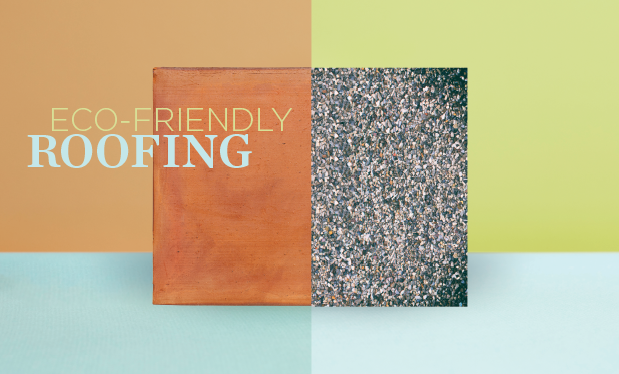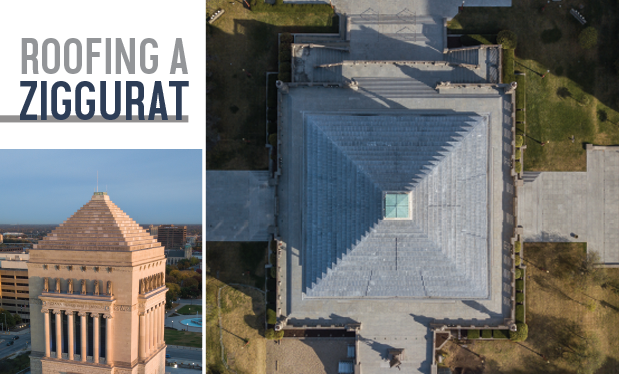There are a variety of codes and standards that apply to the roofing industry, and though they overlap in content, there are important distinctions, particularly when it comes to green building. The intent of green codes, standards and programs is to provide for the health, safety and life of the built environment; increase the economic and resource efficiency of buildings; reduce the effects of climate change through more resilient buildings, communities and cities; and provide for the best modern buildings without compromising future generations’ needs.
These green requirements provide a whole-systems approach to the design, construction and operation of buildings and include cost-effective measures that result in reduced operating costs, better indoor environments, reduced effects on natural resources, and improved neighborhood connections and walkability. The intent of compliance with the International Green Construction Code® specifically is to further reduce energy consumption and environmental effects through high-performing building design and construction while conserving natural resources.
Although they are related and somewhat similar, there are important differences between the IgCC; ASHRAE Standard 189.1, “Standard for the Design of High-Performance Green Buildings”; and LEED you should know.
Revision schedules
The International Code Council,® ASHRAE and U.S. Green Building Council have similar processes to update their respective documents.
All three have a public review and comment period and have voting members who approve the proposed changes. IgCC’s Chapter 1 is reviewed by a committee of about five members with final approval voted on by ICC’s governmental members (code officials) from across the U.S. ASHRAE Standard 189.1 is approved for publication by a committee of about 30 voting members out of a total committee membership of 60-70. Proposed changes to the LEED rating system are voted on by a consensus body that is a volunteer group comprised from the larger USGBC membership.
Since the publication of the 2018 IgCC, the IgCC and ASHRAE Standard 189.1 have essentially become one document. ICC is responsible for maintaining Chapter 1—Scope and Administration of the IgCC, and Chapters 2-11, the appendixes and the annex are the responsibility of the ASHRAE Standard 189.1 committee.
The IgCC is updated and modified every three years, which is the only time changes may be submitted for Chapter 1. However, the technical portion of the code—Chapters 2-11, the appendixes and the annex—is a continual maintenance document. This means these portions can be revised or updated at any time. A proposed change to the standard may be submitted between standard publication dates. If approved, the change is published as an addendum that immediately can be adopted by a jurisdiction as a mandatory requirement. Then, at the next publication date, all approved addendums since the previous publication date are automatically incorporated into the updated published standard.
ASHRAE’s Standing Standards Project Committee is responsible for maintaining ASHRAE Standard 189.1 and currently comprises seven working groups and two task groups. Issues related to roofing are addressed by five of the seven working groups; NRCA is a member of two.
LEED is supposed to have a regular development cycle to update or revise its rating system though it is not as clear as with the IgCC and ASHRAE Standard 189.1. For example, the current rating system by USGBC is LEED v4.1, which was launched in 2019. The version before LEED v4.1, LEED v4, was released in 2013, and the one before that, LEED 2009, also referred to as LEED v3, was released in 2009.
Similar to ASHRAE, USGBC also periodically issues LEED updates. These updates include substantive changes to the current rating system. When reviewing LEED and ASHRAE Standard 189.1, you may notice the documents closely parallel one another. This resulted after the alignment of green building goals between ASHRAE, ICC and USGBC in 2015.
Recent changes
In late 2020, ASHRAE published Standard 189.1-2020, updating the 2017 version of the standard, which has been incorporated into the 2021 IgCC. In the latest version, cool roof requirements have been expanded beyond Climate Zones 1, 2 and 3 to include 4A and 4B. The requirements state a minimum of 75% of a roof surface must be covered with products that have a minimum three-year-aged solar reflectance index of 64 for roof systems with a slope less than or equal to 2:12 and a minimum three-year-aged SRI of 25 for roof systems with a slope of more than 2:12.
Other new requirements include that if a photovoltaic system is being installed on a building site, it must be calculated using the gross roof area over conditioned spaces and semiheated spaces. On a constrained building site, this could easily result in a PV system being installed on the roof rather than elsewhere on the site. Previously, a building project design only had to show allocated space and pathways for future installation of on-site renewable energy systems that could affect a building’s roof if the roof was the designated allocated space.
There also was a revision for the mandatory provisions addressing construction demolition and waste. ASHRAE Standard 189.1–2017 permitted all diversion calculations to be based on either weight or volume—but not both—throughout the construction process. The standard’s 2020 version requires the diversion calculation of waste material to be based only on weight. In addition, the 2020 version clarifies the limitation for total waste. Previously, the total amount of construction waste for new building projects on sites with less than 5% existing buildings, structures or hardscapes was not to exceed 42 cubic yards or 12,000 pounds per 10,000 square feet of new building floor area. The 2020 version limits total construction waste to 20 pounds per square foot of new building area for new construction regardless of any existing buildings, structures or hardscapes.
In October 2020, ASHRAE published Standard 169-2020, “Climatic Data for Building Design Standards.” This is important because the climate zone map contained in ASHRAE Standard 169 is referenced in ASHRAE Standard 189.1 when determining R-values or U-factors.
It also is worth noting the northerly migration of some of the climate zones, particularly 3, 4 and 5. Also, Climate Zone 1 in south Florida is larger and has expanded to include the southern tip of Texas.
Reducing energy consumption
Protecting the environment continues to be a priority for many building owners. It is important you stay abreast of recent changes to green building codes and standards to ensure you are installing roof systems appropriately.
GLEN CLAPPER, AIA, LEED, AP, is an NRCA director of technical services.



